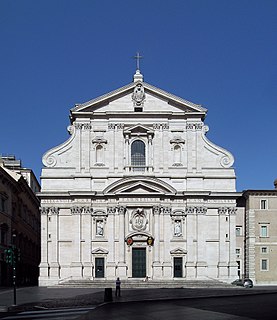| Žigrski Vrh | |
|---|---|
| Coordinates: 46°0′36.82″N15°21′28.61″E / 46.0102278°N 15.3579472°E Coordinates: 46°0′36.82″N15°21′28.61″E / 46.0102278°N 15.3579472°E | |
| Country | |
| Traditional region | Styria |
| Statistical region | Lower Sava |
| Municipality | Sevnica |
| Area | |
| • Total | 2.65 km2 (1.02 sq mi) |
| Elevation | 305.1 m (1,001.0 ft) |
| Population (2002) | |
| • Total | 171 |
| [1] | |
Žigrski Vrh (pronounced [ˈʒiːɡəɾski ˈʋəɾx] ) is a settlement in the Municipality of Sevnica in central Slovenia. It lies in the hills above the left bank of the Sava River east of Sevnica in the historical region of Styria. The municipality is now included in the Lower Sava Statistical Region. [2]

The Municipality of Sevnica is a municipality along the Sava and the Mirna Rivers in southeastern Slovenia. The seat of the municipality is the town of Sevnica. Today it is part of the Lower Sava Statistical Region. It is the 12th-largest municipality by area in Slovenia.

Slovenia, officially the Republic of Slovenia, is a sovereign state located in southern Central Europe at a crossroads of important European cultural and trade routes. It is bordered by Italy to the west, Austria to the north, Hungary to the northeast, Croatia to the southeast, and the Adriatic Sea to the southwest. It covers 20,273 square kilometers (7,827 sq mi) and has a population of 2.07 million. One of the successor states of the former Yugoslavia, Slovenia is a parliamentary republic and a member of the United Nations, of the European Union, and of NATO. The capital and largest city is Ljubljana.

The Sava is a river in Central and Southeastern Europe, a right tributary of the Danube. It flows through Slovenia, Croatia, along the northern border of Bosnia and Herzegovina, and through Serbia, discharging into the Danube in Belgrade. Its central part is a natural border of Bosnia-Herzegovina and Croatia. The Sava forms the northern border of the Balkan Peninsula, and the southern edge of the Pannonian Plain.
The local church is dedicated to Saint Benedict and belongs to the Parish of Sevnica. It dates to the 16th century and was remodelled around 1700 in the Baroque style. [3]

A church building or church house, often simply called a church, is a building used for Christian religious activities, particularly for Christian worship services. The term is often used by Christians to refer to the physical buildings where they worship, but it is sometimes used to refer to buildings of other religions. In traditional Christian architecture, the church is often arranged in the shape of a Christian cross. When viewed from plan view the longest part of a cross is represented by the aisle and the junction of the cross is located at the altar area.

Benedict of Nursia is a Christian saint, who is venerated in the Roman Catholic Church, the Eastern Orthodox Church, the Oriental Orthodox Churches, the Anglican Communion and Old Catholic Churches. He is a patron saint of Europe.

Baroque architecture is the building style of the Baroque era, begun in late 16th-century Italy, that took the Roman vocabulary of Renaissance architecture and used it in a new rhetorical and theatrical fashion, often to express the triumph of the Catholic Church. It was characterized ..by new explorations of form, light and shadow, and dramatic intensity. Common features of Baroque architecture included gigantism of proportions; a large open central space where everyone could see the altar; twisting columns, theatrical effects, including light coming from a cupola above; dramatic interior effects created with bronze and gilding; clusters of sculpted angels and other figures high overhead; and an extensive use of trompe-l'oeil, also called "quadratura," with painted architectural details and figures on the walls and ceiling, to increase the dramatic and theatrical effect.








